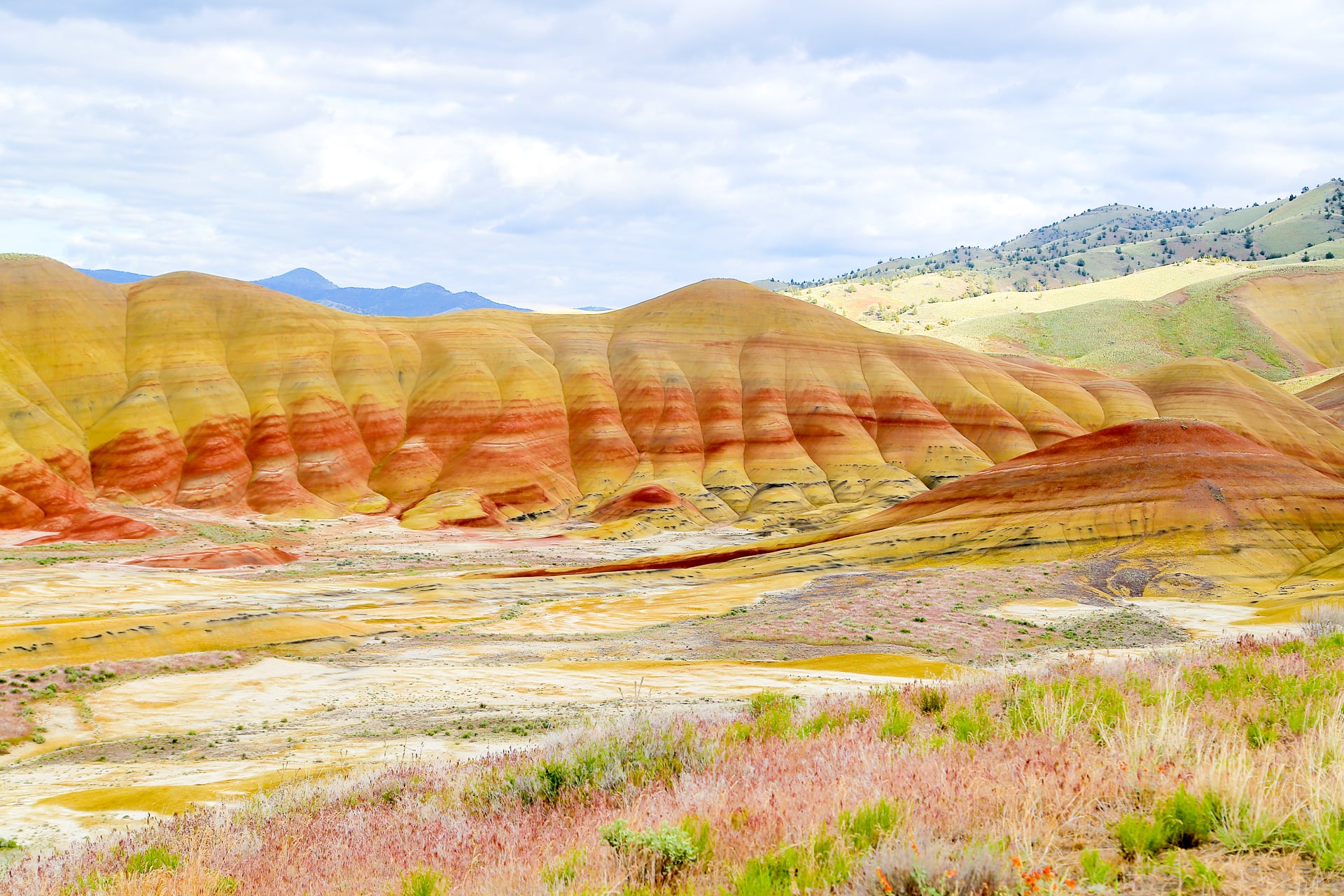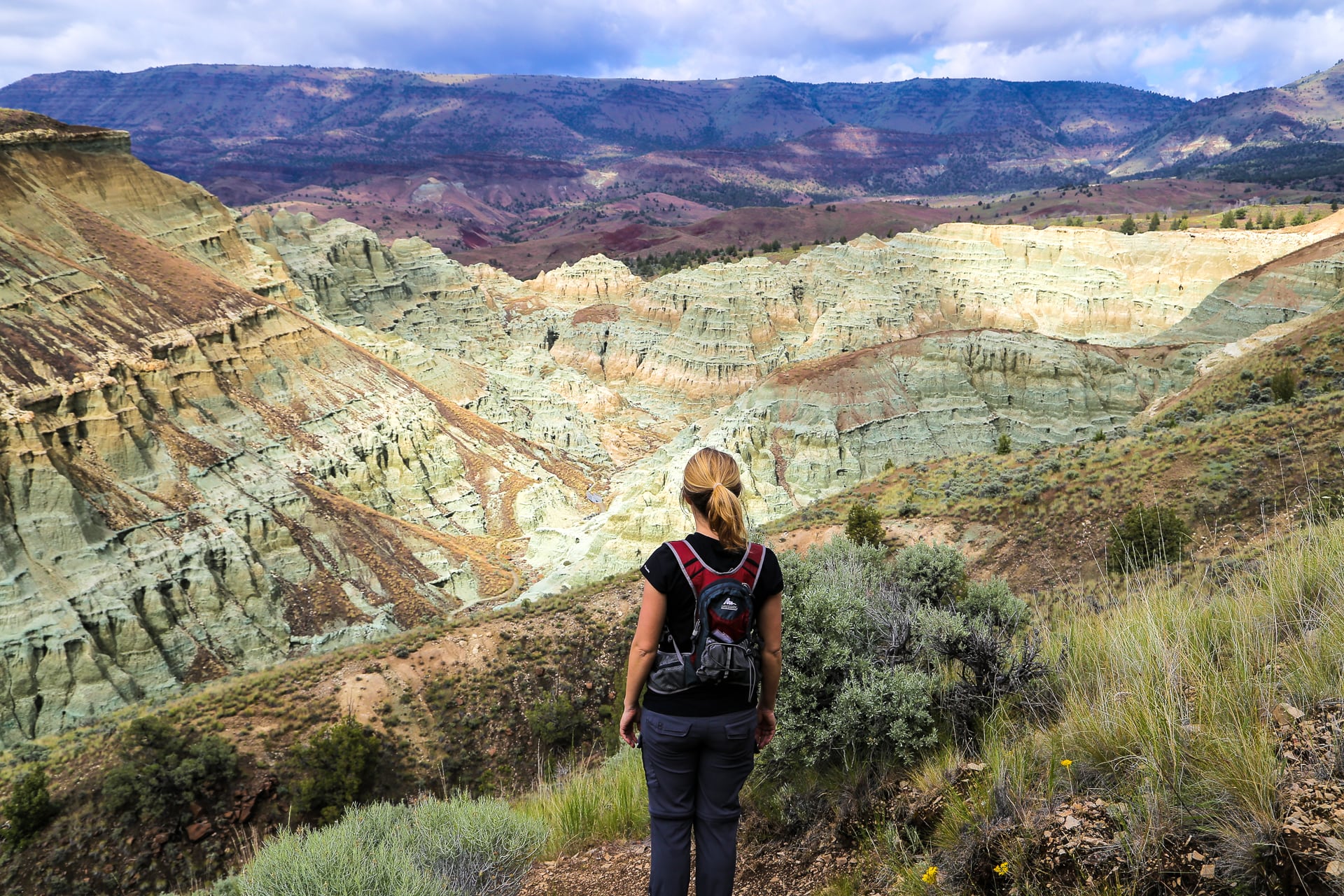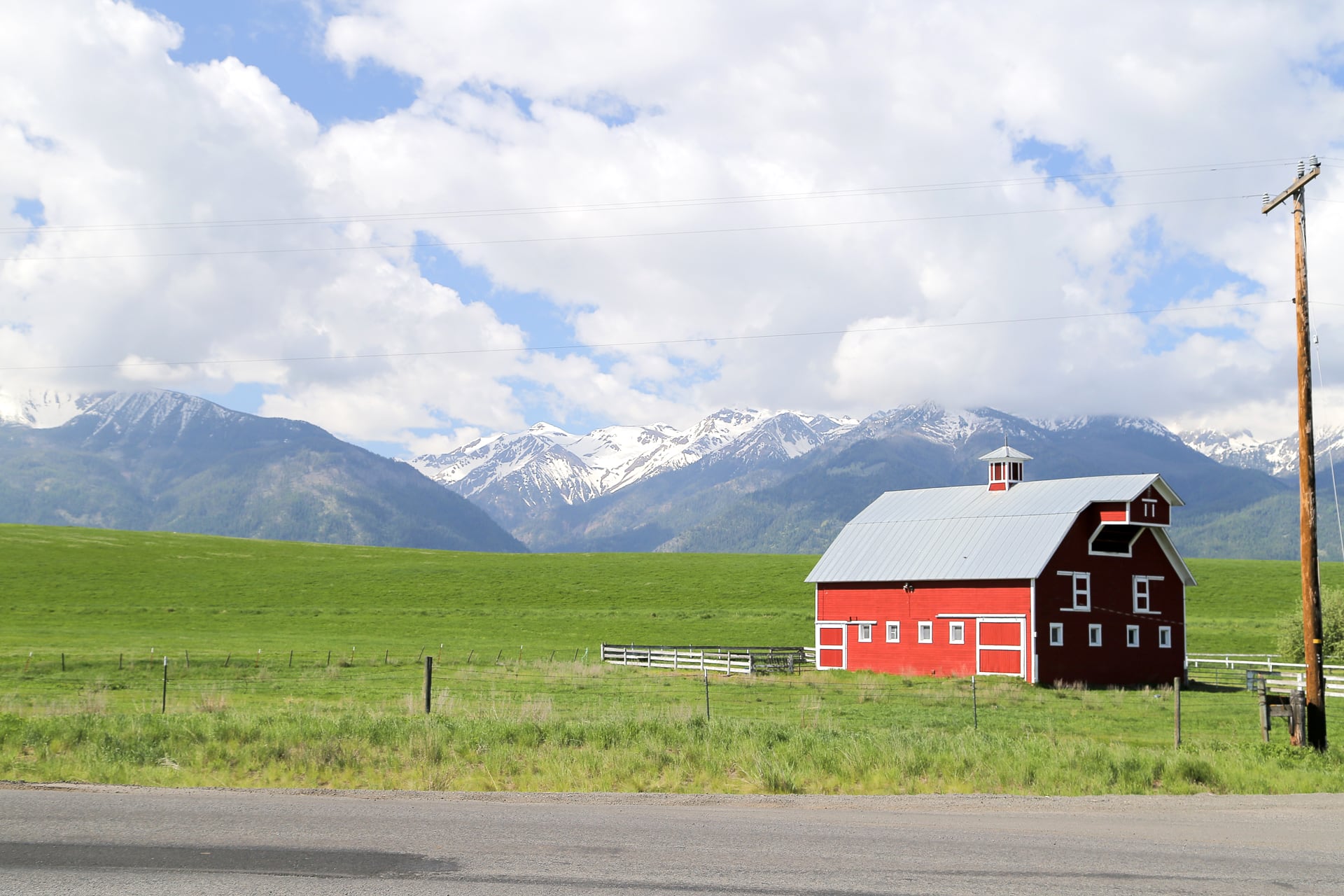The Painted Hills of Eastern Oregon. Lori and I have been wanting to visit these stunning freaks of nature for a while, but given their fairly remote location (certainly for those who don’t live in Bend), a visit hadn’t been feasible until now. Lori had visited them during a summer road trip with her family around the region as a kid, but didn’t remember much of the Painted Hills. This was my first trip into Central and Eastern Oregon.

After wrapping up our day exploring the Sheep Rock Unit of John Day Fossil Beds National Monument, we made the hour-long drive along U.S. 26 to arrive just in time for the sun setting on the Painted Hills.

It’s always nice to see Uncle Rico taking in the splendors of the American landscape (eghem…Napoleon Dynamite reference anybody…?)

The Painted Hills are named for their bright layers corresponding to various geological eras. The red is laterite soil formed by floodplain deposits when the area resembled more of a tropical paradise than high desert. The grey is mudstone, siltstone, and shale. The black soil is lignite, a product of vegetative matter which grew along the floodplain.


The Painted Hills form one of the three units of the John Day Fossil Beds National Monument (the others being the Clarno and Sheep Rock units). The Hills are included owing to the abundance of fossil remains of early horses, camels, and rhinos embedded in the Hills.


In addition to their National Monument status, the Painted Hills are also listed as one of Oregon’s “Seven Wonders.” That’s all I got to say ’bout that…











